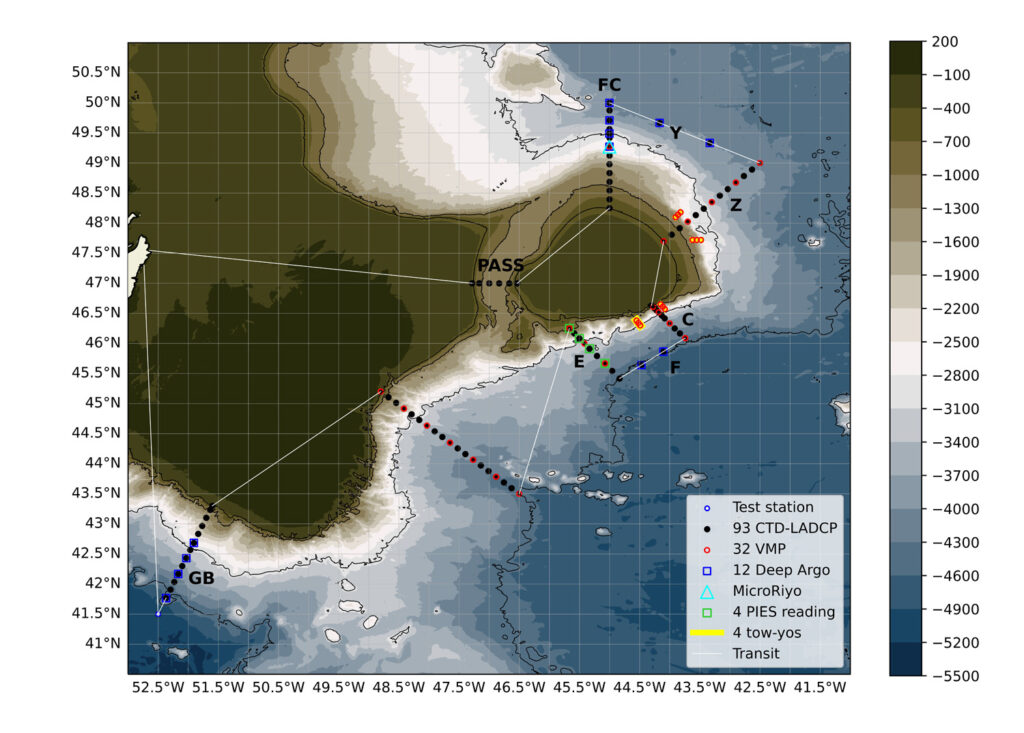EPOC expeditions: Transition Zone cruise 2024
Key facts
Dates: 1 August – 29 August 2024
Start-Finish: St John’s (Canada) — St John’s (Canada)
Vessel: N/O Thalassa
Lead scientist: Damien Desbruyères, Ifremer.
Work area: Flemish Cap, Grand Banks (NW Atlantic)
Key objectives: Ship-based CTD-LADCP casts measuring ocean temperature, salinity, and velocity. High-resolution “tow-yo” transects. Deployment of a microstructure mooring. Deployments of Deep-Argo floats. Readings of PIES data.
EPOC partners involved: Ifremer, University of Bremen, Universität Hamburg

Overview
The CROSSROAD project aims to decipher the local dynamics of the North Atlantic “Transition Zone (TZ)” (Flemish Cap and the Grand Banks of Newfoundland) and study their impact on the variability of metrics relevant to the climate of the North Atlantic and neighboring regions (the Meridional Overturning Circulation or the Ocean Heat Content, for example). This project is closely linked to the European Horizon Europ EPOC (“Explaining and Predicting the Ocean Conveyor”) project, through which a number of current-measuring mooring lines and bottom-landers have been deployed on the continental slope of the TZ in 2023 (recovery of these moorings is scheduled for summer 2025 on the N/O Thalassa). The CROSSROAD oceanographic campaign is part of this international effort and will provide a high-resolution, quasi-synoptic description of the dynamics of the TZ in 2024. The campaign will combine measurements of water mass properties (temperature, salinity, oxygen), currents and turbulence. These in situ measurements will be complemented by deployments of 12 Deep Argo floats as well as a microstructure mooring system. All these measurements, complemented by very high-resolution regional numerical modelling, will target both the large-scale dynamic processes (e.g. recirculations of the deep western rim current) and the fine-scale processes (e.g. instabilities and turbulence) affecting the NADW.
